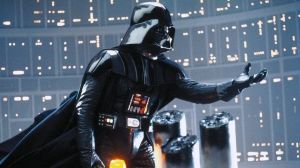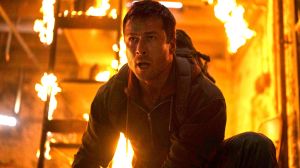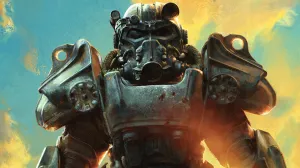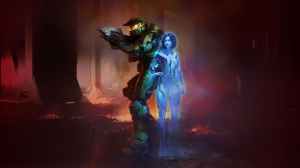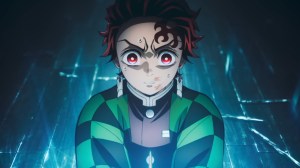Last weekend, the world was treated to the first two episodes of Star Wars: Obi-Wan Kenobi, the long-awaited and highly-anticipated new Disney+ television series set within the Star Wars universe. While the very idea of the project had been hyped up by fans from the second it was first rumored, the actual manifestation of it has arguably only made fans more excited, especially as the marketing for the show has teased elements like a long-awaited rematch between Obi-Wan Kenobi (Ewan McGregor) and Anakin Skywalker / Darth Vader (Hayden Christensen), and the exploration of the Inquisitor lore in live-action. But hidden amongst that was the premiere’s biggest highlight — that Obi-Wan is sent on the series’ entire hero’s journey to rescue a young Leia Organa (Vivien Lyra Blair), who has been kidnapped as bait by bounty hunters with ties to the Inquisitors. The reveal, and the mere inclusion of Leia in Obi-Wan Kenobi, has not only become one of the most buzzed-about elements of the show, but it might be one of the most significant story beats Star Wars has had during its Disney era.
Videos by ComicBook.com
It’s no secret that recent Star Wars installments have enjoyed introducing cameos from other parts of the franchise, to the point where the narrative of this year’s The Book of Boba Fett miniseries was arguably eclipsed by including too many. While those appearances can succeed in delighting fans, showcasing unprecedented team-ups within the Star Wars universe, and helping the franchise feel more comprehensive, they can also be subject to sorts of ridicule. That has especially been the case when certain cameos have utilized deepfaking technology, either to bring a deceased actor’s likeness back to life (in the case of Moff Tarkin in Rogue One: A Star Wars Story) or de-age an actor (in the case of Luke Skywalker in The Mandalorian and The Book of Boba Fett) to a possibly-uncanny or distracting effect. Leia already hasn’t been immune to that kind of cameo treatment, beginning with a deepfaked younger version of the character in the final scene of Rogue One, just days prior to the passing of original Leia actress Carrie Fisher. The character was then deepfaked for a brief flashback sequence in 2019’s The Rise of Skywalker, but the idea of revisiting Leia’s younger years beyond that still remained a prickly one, especially given the cultural significance of Fisher and her portrayal of Leia. Sure, there could have been an avenue to see, for example, Stranger Things star Millie Bobby Brown as a precocious teenage Leia, but that could have easily become a gimmick in the wrong hands.
Enter Obi-Wan Kenobi — or, more specifically, Blair’s portrayal of Leia across the first two episodes. While the show’s marketing had openly confirmed that a young Luke Skywalker (Grant Feely) would appear, Leia’s involvement was nothing more than a heavily-rumored possibility, and could have easily only been confined to a scene or two. Instead, Leia has (so far) essentially functioned as the co-lead of Obi-Wan Kenobi, partnering with the titular character on his increasingly-dire journey to bring her back home to Alderaan. On the surface, it’s a storyline that is so simple – so simple, in fact, that it has understandably drawn comparisons to The Mandalorian‘s initial father-and-child adventure with Din Djarin and Grogu. But that simplicity only adds to the brilliance of the show’s execution, as the storyline foregos being a gimmick in favor of boosting both Obi-Wan and Leia’s storylines, as well as filling in some gaps of original Star Wars canon.
With regards to the latter, fans have spent decades wondering how, in the events of Star Wars: A New Hope, Leia already knows who “Ben Kenobi” is before crossing paths with him and Luke. A prevailing theory had been that Leia knew of the man through her adopted father, Bail Organa (Jimmy Smits), and him possibly recounting stories of his days in the Clone Wars. But the events of Obi-Wan Kenobi add so much more significance to Leia and Obi-Wan’s connection, as we now know that he rescued her from her first foray off-planet as a child, and just so happened to use his Jedi powers to do it. While we still have up to four more episodes of Leia and Obi-Wan’s adventure together, the idea that the experience significantly changed her — to the point where she would call him her “only hope”, wouldn’t miss a beat upon hearing his name when Luke rescues her, and would eventually name her only child after him — makes a stunning amount of sense. It’s a rare bit of fan-service — the kind that thoroughly answers a question fans didn’t know they had, while also strengthening the text of what you’re watching at the moment.
And what are we watching at that moment? Based on the first two episodes, Leia and Obi-Wan’s dynamic is something unique and endlessly charming, while also carrying an impressive amount of emotional weight behind it. We already could guess that Obi-Wan Kenobi would dive into its titular character’s repressed grief over Anakin’s turn to the Dark Side and Padme Amidala’s (Natalie Portman) death, but Leia’s presence serves as a physical manifestation of that, especially as Blair channels a lot of the confident and lovable minutia of Christensen and Portman’s previous performances. Blair also serves as a stunningly effective ode to Fisher’s decades-spanning portrayal of Leia, mixing all of the sassy and articulate charm of adult Leia with the unfettered optimism of being a ten-year-old girl.
That’s a juxtaposition that’s absolutely wonderful to witness — arguably more so than Obi-Wan watching over Luke, who is essentially just a blissfully ignorant, illiterate farm boy at the point of Obi-Wan Kenobi. It’s also wonderful given how meaningful Leia is in the larger tapestry of Star Wars, but it’s not a story that the saga was previously concerned with telling. The “young so-and-so” stories in the live-action corners of Star Wars have largely centered on male characters, and any canonical solo material surrounding Leia has consisted of comics and novels set right around or after the original trilogy. Sure, we’ve gotten piecemeal details about Leia’s childhood and origin story in the occasional tie-in novel or supplemental material, but to actually see it realized onscreen feels incredibly special, especially since she’s one of the most ubiquitous female characters in the science fiction space.
Sure, we still have four weeks left to go of Obi-Wan Kenobi, and (outside of the sealed fates of Obi-Wan, Leia, and some of the original trilogy characters) there’s no telling exactly what could happen. But right out of the gate, the series has arguably raised the bar in terms of what’s possible for a Disney+ show — and the introduction of a young Leia Organa might be a key component of that. If the first two episodes of Obi-Wan Kenobi are any indication, Leia’s debut on the show has established a new way to play into the current pop culture expectations of cameos and fan service, without resorting to the cheapest or most hollow common denominator. At the same time, that approach has already managed to enrich decades worth of canon in the larger Star Wars saga, while also giving one of the most significant female characters in pop culture the origin story she deserves.
New episodes of Star Wars: Obi-Wan Kenobi will debut on Disney+ on Wednesdays. If you haven’t signed up for Disney+ yet, you can try it out here.
Note: If you purchase one of the awesome, independently chosen products featured here, we may earn a small commission from the retailer. Thank you for your support.


